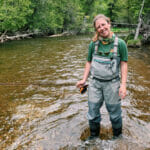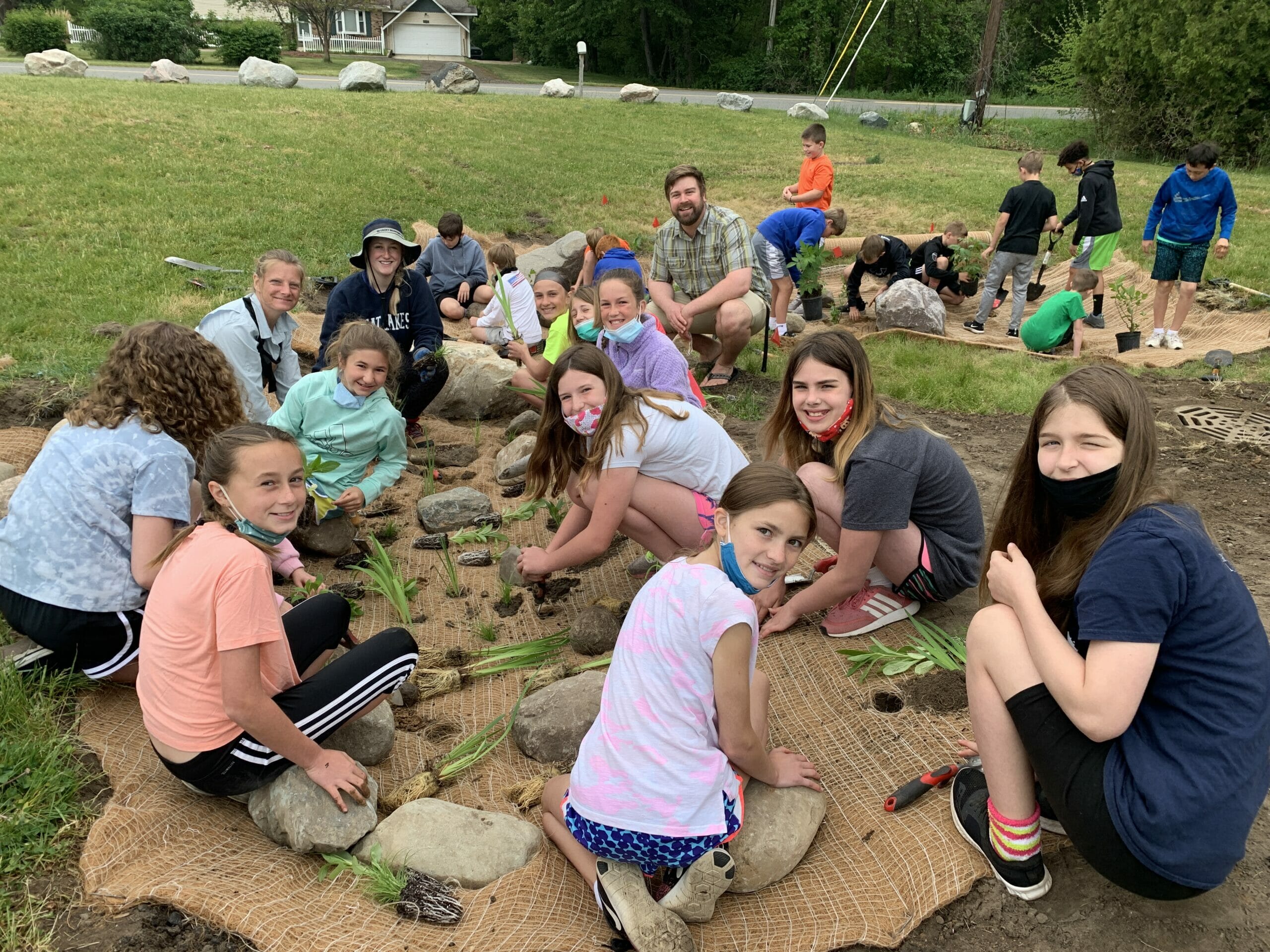What images come to mind when you picture your schoolyard from childhood? Do you see stark, barren scenes dominated by hardscapes?
Or verdant, lush environments teeming with songbirds and pollinators?
On a hot day last May, Crestwood Elementary School in Michigan took a step toward the second vision thanks to staffers from Trout Unlimited, local partners and the school—as well as dozens of hard-working and enthusiastic students. It was part of an initiative by TU in Michigan to build partnerships with local schools to improve nearby trout streams in a way that empowers students, families, and school staff to participate and benefit from the opportunities that come along with a restoration project.
TU’s Jamie Vaughan and Abigail Henschell, landscape architect Rebecca Marquardt, and Crestwood Elementary School principal Nicole Peterson arrived early to stage plants, arrange tools, and connect hoses prior to the arrival of a wave of students to plant a bioswale.
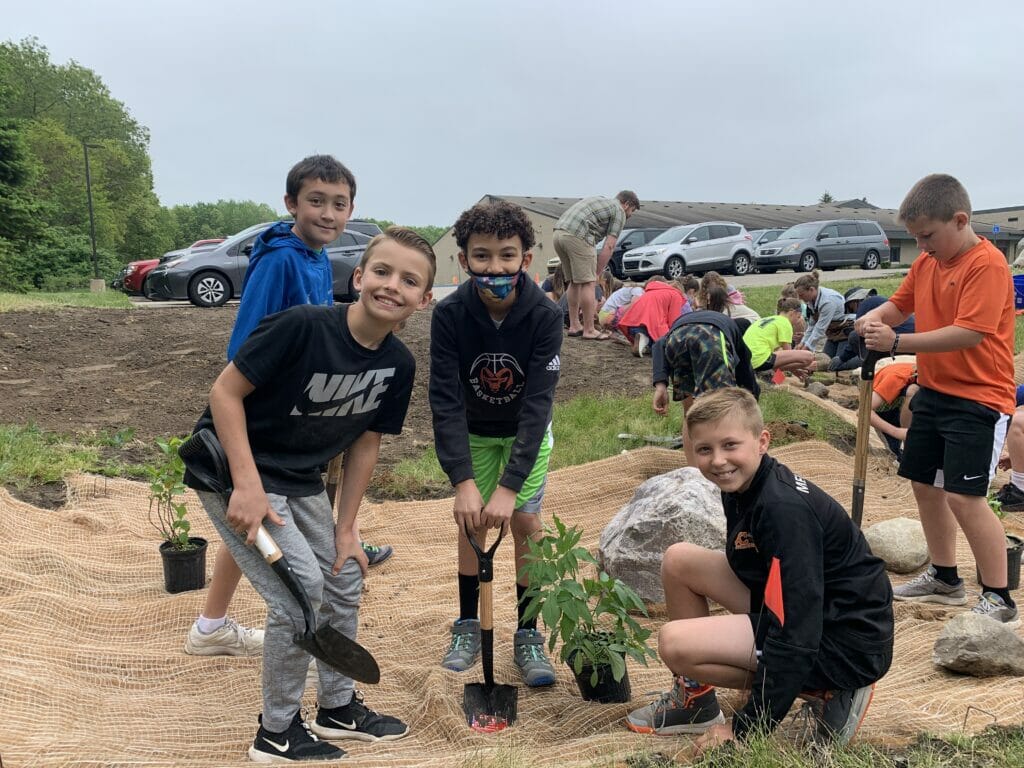
After more than a year of thoughtful planning, the culmination of such projects is often a bit of controlled chaos as students get to let loose and get their hands dirty, particularly after a school year impacted by the pandemic.
The first class to come out was a fifth-grade class taught by Carl Baird, a local angler and TU volunteer. Asked about why the project was important for trout, they displayed an impressive knowledge of watersheds. It was clear that some of these bright students were budding stewards already.
As the oldest students to lend a hand that day, they did the challenging work of digging and planting a variety of native Michigan plants, such as blue flag iris and swamp milkweed. After they got the project started, a parade of eight other classes came outside to help throughout the school day.
Eager 4th graders excitedly carried and placed rocks to dissipate the water as it flowed into the garden. Younger kindergartners filled up cups and gingerly watered the newly planted seedlings.
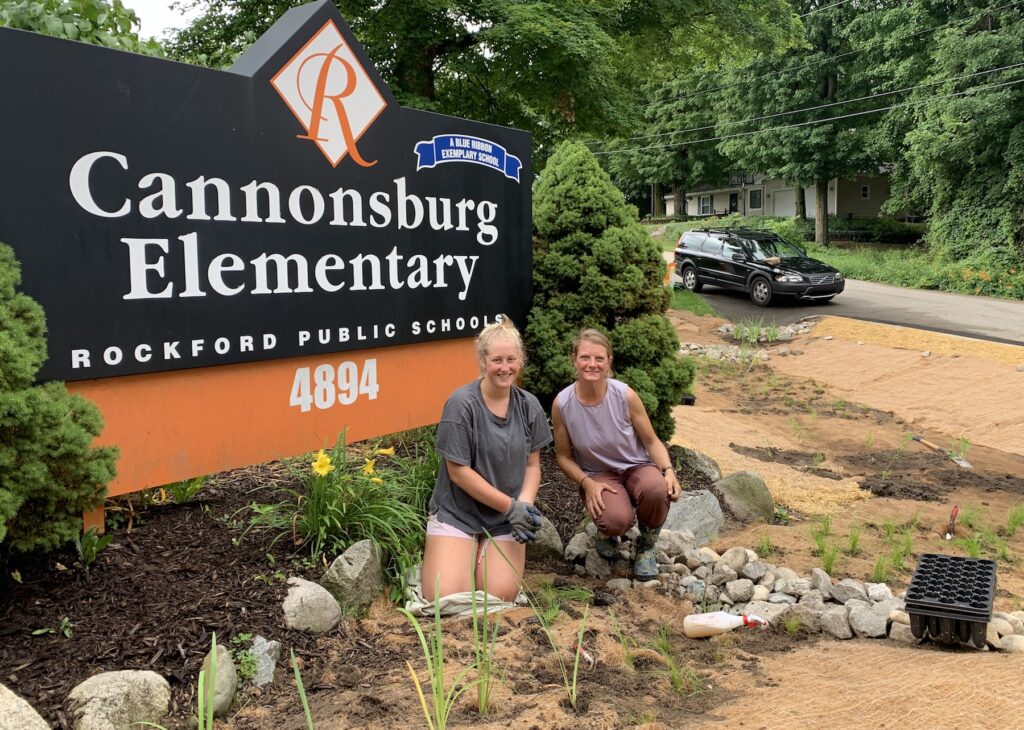
By the end of the day, adults were overheated and exhausted but had full hearts. Nearly 200 students had a memorable, hands-on role in planting the bioswale. Along with those students, the bioswale will also grow and thrive and change over the years, lending function and beauty and endless learning opportunities in years to come.
Thanks to the Green Schoolyards movement, this image could become the norm across American communities.
Harnessing the potential of schoolyards presents many benefits, from improved health and wellness, climate change resilience, increased attention and attendance, and a more interconnected, engaged community.
Public school systems, such as those in the Lower Grand River watershed, typically manage large amounts of land with a high proportion of impervious surfaces, including sprawling parking lots and extensive roofs. They are often located adjacent to streams, which are becoming degraded by thermal pollution and unstable hydrology resulting from excess stormwater runoff, as well as excess nutrients and chemicals from sports fields and large lawns.
The good news is there is lots of room for improvement. Schools often have areas of open or underutilized space that can provide opportunities to implement best management practices to improve stormwater management and add other ecological benefits.
In Michigan’s Rogue River watershed, a unique coldwater tributary to the Grand River where TU staff have led a Home Rivers Initiative since 2010, TU has been looking to schoolyards adjacent to trout streams to analyze their potential to improve local watershed health.
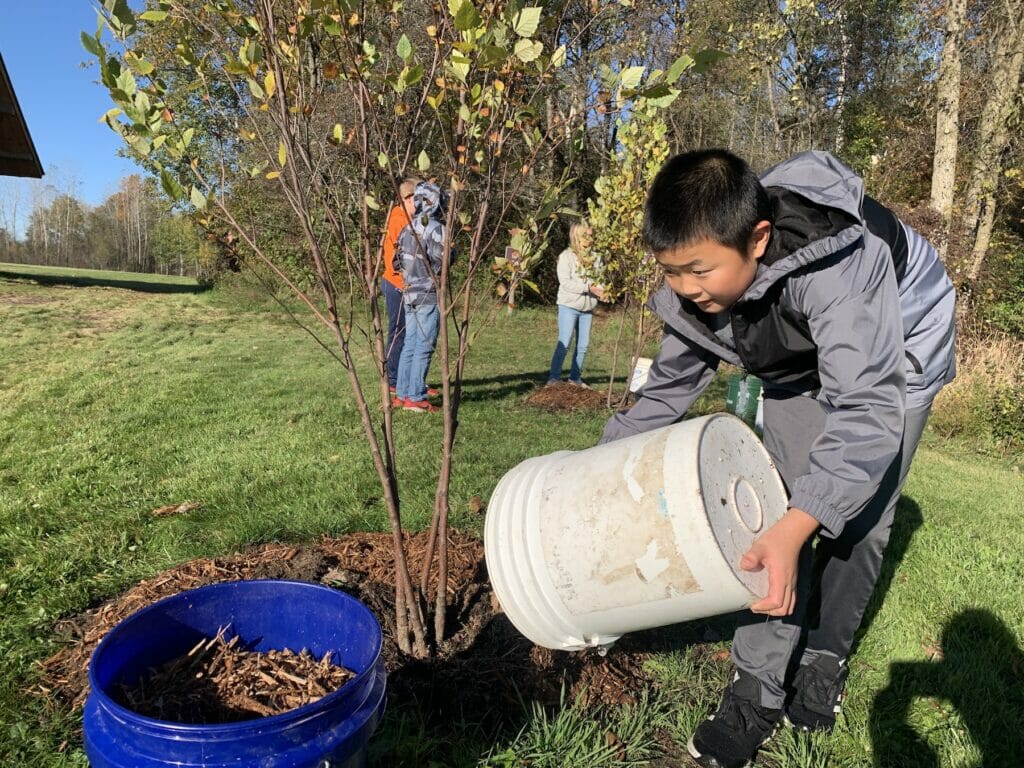
TU installed its first school rain garden in 2018 at Parkside Elementary School within the Rockford Public School District. The project diverted stormwater runoff from the pavement into a rain garden instead of into a storm drain that dumps directly into Rum Creek, a trout stream.
More recently, TU teamed up with the Lower Grand River Organization of Watersheds (LGROW) to harness the power of green schoolyards with a project called Grand River Green Schools.
“The Grand River Green Schools project focused on the installation of green infrastructure practices, the training of school facilities staff in proper maintenance of green infrastructure, and the engagement of youth and families around the role of trees and native plants in managing stormwater runoff,” said Eileen Boekestein, Environmental Education Coordinator with LGROW.
“The goals were not just to reduce excessive runoff, but also to build capacity for schools to engage in future green infrastructure projects confidently and successfully,” she added.
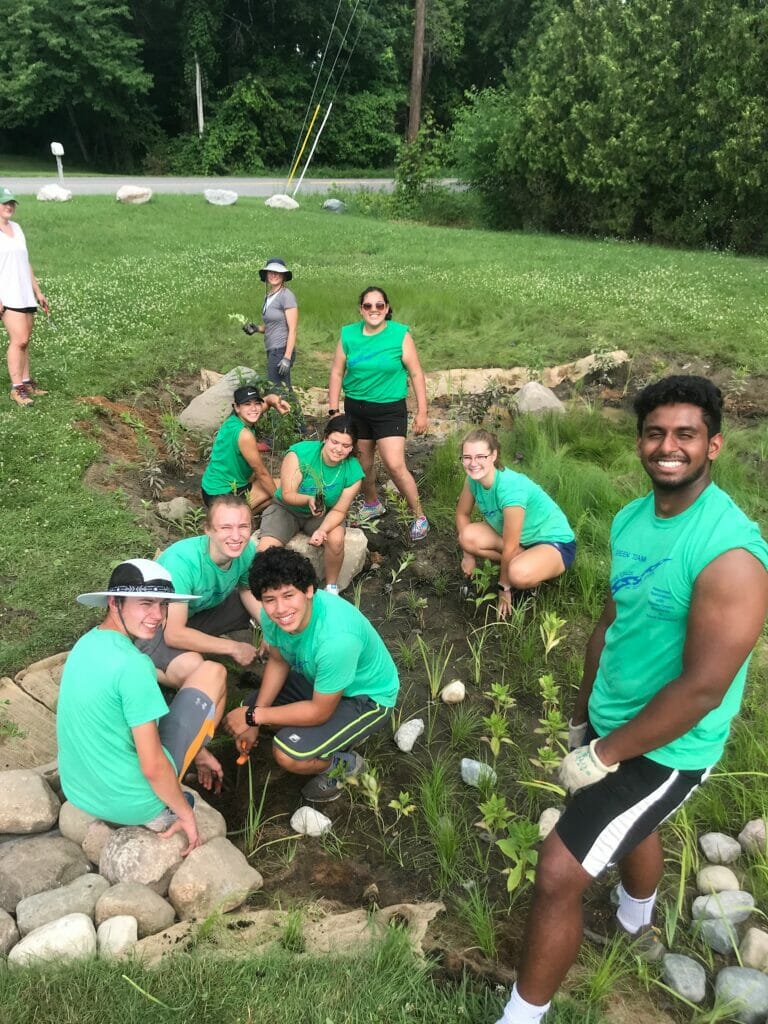
In total, the Grand River Green Schools project boasts 15 participating schools and 40 trained school staff. So far they have planted 300 trees (which intercept 71,120 gallons of stormwater runoff annually), achieved 7,600 square feet—that’s about twice the area of a tennis court—of native plantings (which intercept 748,956 gallons of stormwater runoff annually), and engaged with 1,093 volunteers and youth.
The benefits of green schoolyards go far beyond the ecological improvements to trout streams. There’s ample research that suggests seeing nature and greenery from school buildings can foster positive academic outcomes.
Green schoolyards and features such as gardens and trees provide endless learning opportunities for students of all ages across all disciplines, from STEM topics and art to creative writing.
According to the Children and Nature Network, green schoolyards “result in better grades, higher test scores, and enhanced knowledge across several subjects. They also help students focus attention and regulate behavior, enhance attitudes and engagement with school, and support creativity, critical thinking and problem solving.”
Sally Triant, founder of Grow Wise Learning and an Environmental Education Consultant to Grand Rapids Public Schools, sees it like this: “Environmental education does not require extensive field trips or even visits to nature centers. This misconception perpetuates because most teachers are not considering the schoolyard directly outside their classroom as an environment ripe with opportunity for education and community connection.”
Utilizing schoolyards can also be equitable. Schools that don’t have the funding for high-quality field trips need only to look outside their school walls with fresh eyes to recognize the possibilities that may already exist.
Unfortunately, schools within communities of color often lack features like trees and lawns, and therefore face greater challenges to bringing learning outdoors. Organizations such as Groundswell offer trainings and small grants for teachers to help tackle some of these challenges.
TU staffers are also well-positioned in communities across the country to support this transition to ecologically and academically rich schoolyards where they dovetail with coldwater rivers and streams.
We believe there is potential in any corner of a watershed to have a profound impact on American’s trout rivers and streams, especially when we can bring a community together on a project where there are so many benefits.
The Grand River Green Schools project is funded by the Great Lakes Restoration Initiative through the U.S. Forest Service.


